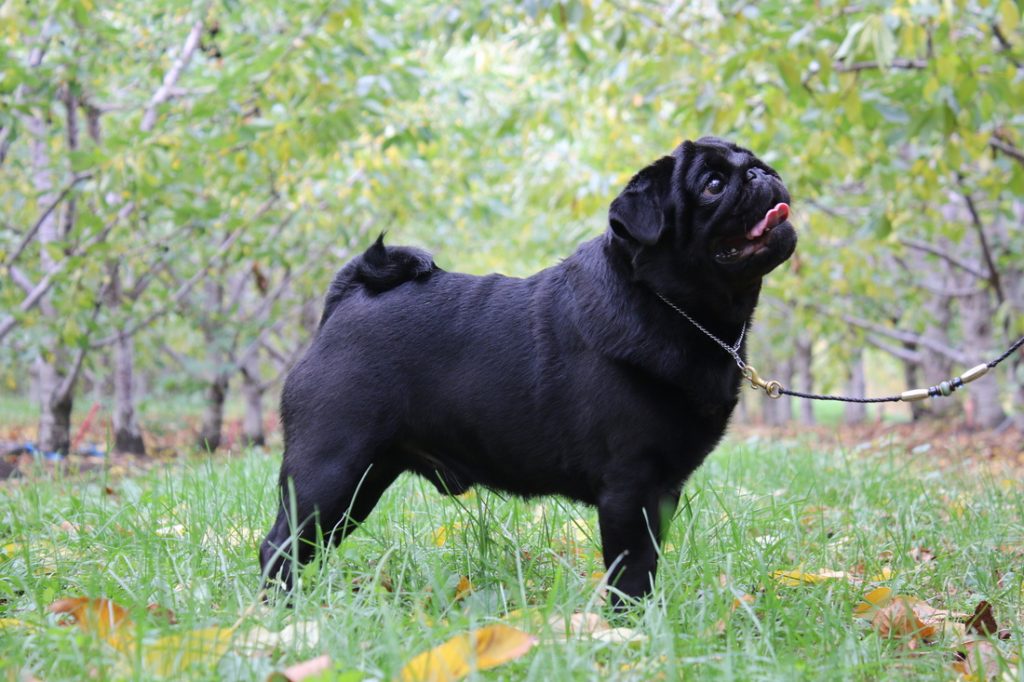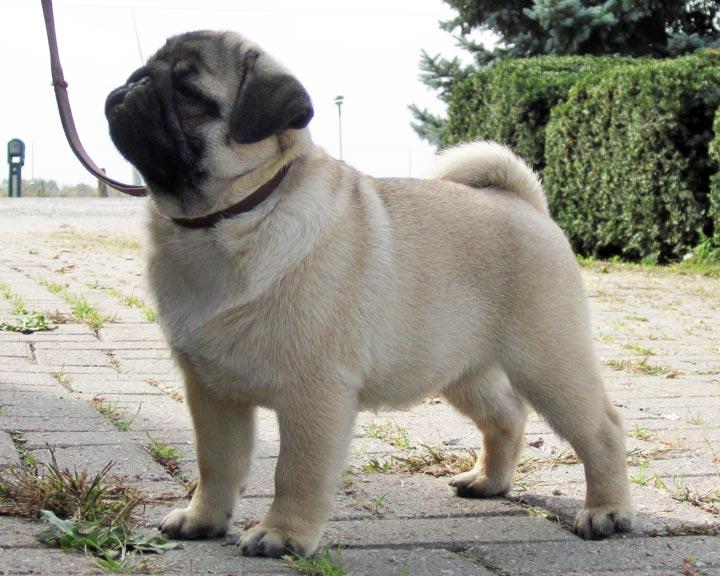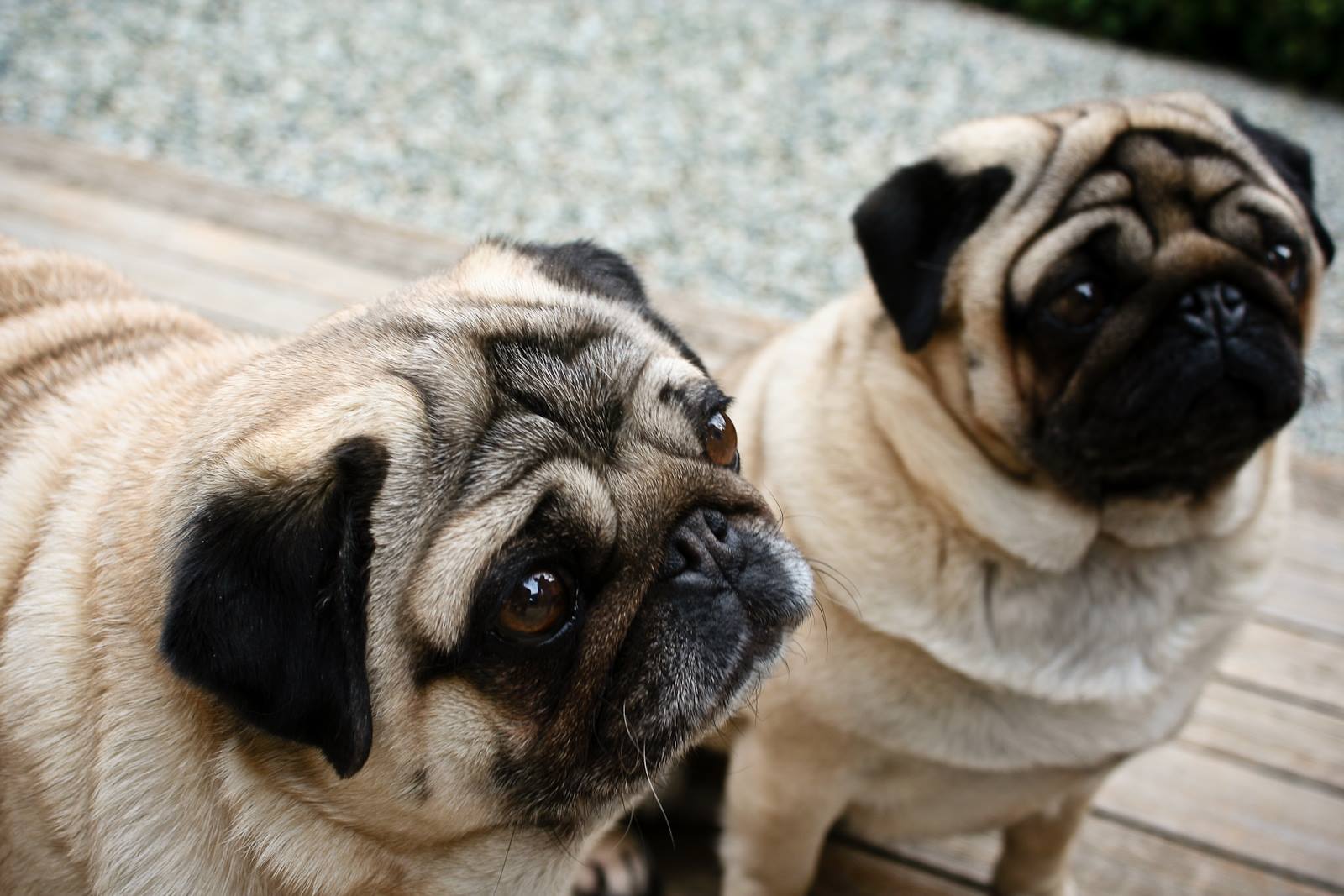Illustrated Breed Standard
The Canadian Kennel Club (CKC)
Pug
Origin and Purpose
The Pug is a Toy companion dog that thrives on human association. The earliest start of the breed dates back to around 750 B.C. It is one of the earliest breeds of dog with evidence pointing to the fact that the
Pug is almost as old as the Greyhound. Their beginnings came from a breed of dog named Lo-sze or “Foo Dog”. This was the ancient Pug from Eastern Literature and art.
From China, Pugs eventually found their way to parts of Europe and then England where throughout history they have been kept, spoilt, pampered and guarded by China’s Emperors and the world’s Royalty. Over the centuries the Pug has remained true to its original purpose and is basically unchanged in general appearance, temperament & markings.
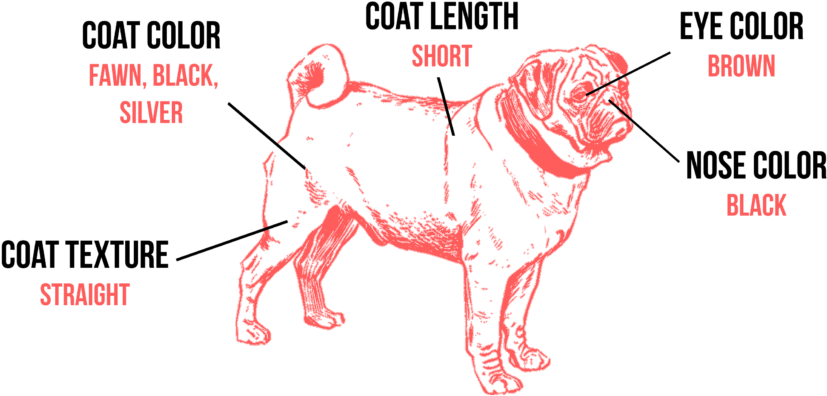
General Appearance
Is decidedly square and cobby. A lean, leggy Pug and a dog with short legs and a long body are equally objectionable.
Coat, Colour & Markings
The coat is fine, smooth, soft, short and glossy, neither hard nor woolly. The colours shall be only fawn, silver-fawn or black. Fawn is any fawn shade including light apricot, deep apricot, to reddish gold. Silver-
fawn has a decidedly cold, silver cast. The colour of the full moon as opposed to the sun on an otherwise light coloured coat. A smutty coat has darkened areas that give a sooty or smoky effect. This is not
silver-fawn and is undesirable. Regardless of the fawn shade, the colour should be decidedly so as to make the contrast complete between the colour and the trace and the mask. A smattering of black-tipped guard hairs, hardly visible unless inspected closely, is quite common and not to be faulted. Black to be glossy jet black.
The markings are clearly defined. The muzzle or mask, ears, moles on cheeks, thumb mark or diamond on forehead, and the back trace should be as black as possible. The mask should be black. The more
intense and well defined it is the better. The trace is a black line extending from the occiput to the tail.
Size, Proportion, Substance
The Pug should be Multum in Parvo (much in little) and this condensation (if the word may be used) should be shown by compactness of form, well-knit proportions, and hardness of developed muscle. Weight from 14-18 lbs. (6.3-8.1 kgs) dog or bitch desirable. Proportion: square.
Head
The head is large, massive, round – not apple-headed, with no indentation of the skull. The eyes are dark in colour, very large, bold and prominent, globular in shape, soft and solicitous in expression, very lustrous, and when excited, full of fire. The ears are thin, small, soft, like black velvet. There are two kinds – the “rose” and the “button”. Preference is given to the latter. The wrinkles are large and deep. The muzzle is short, blunt square, but not upfaced.
Bite
A Pug’s bite should be very slightly undershot. Both front rows of teeth should be straight between the canines.
Neck, Topline, Body
The neck is slightly arched. It is strong, thick, and with enough length to carry the head proudly.
The short back is level from the withers to the high tail set. The body is short and cobby, wide in chest and well ribbed up. The tail is curled as tightly as possible over the hip. The double curl is perfection.
Forequarters
The legs are very strong, straight, of moderate length, and are set well under. The elbows should be directly under the withers when viewed from the side. The shoulders are moderately laid back. The pasterns are strong, neither steep nor down. The feet are neither so long as the foot of the hare, nor so round as that of the cat; well split-up toes, and the nails black.
Hindquarters
The strong, powerful hindquarters have a moderate bend of stifle and short hocks perpendicular to the ground. The legs are parallel when viewed from behind. Hindquarters are in balance with the forequarters. Thighs and buttocks are full and muscular.
Gait
Viewed from the front, the forelegs should be carried well forward showing no weakness in the pasterns, the paws landing squarely with the central toes straight ahead. The rear action should be strong and free through hocks and stifles, with no twisting or turning in or out at the joints. The hind legs should follow in line with the front. There is a slight natural convergence of the limbs both fore and aft. A slight roll of the hindquarters typifies the gait which should be free, self-assured, and jaunty.
Temperament
This is an even-tempered breed, exhibiting stability, playfulness, great charm, dignity, and an outgoing, loving disposition.
Faults
Severe Faults:
Any solid white patch anywhere but on the chest. The white on the chest to be no larger than a dime.
Disqualifications
Wry mouth, teeth or tongue showing. All colours, shades or patterns not described herein shall disqualify.
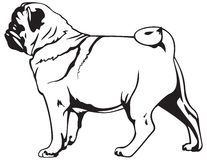
No Fad Colours
Colours that are not accepted according to the CKC breed standard, or otherwise rare or unusual colours, are considered non-purebred. The Pug comes in two recognized colours only, fawn and black.
Pug Color – A Matter of Preference and Genetics
